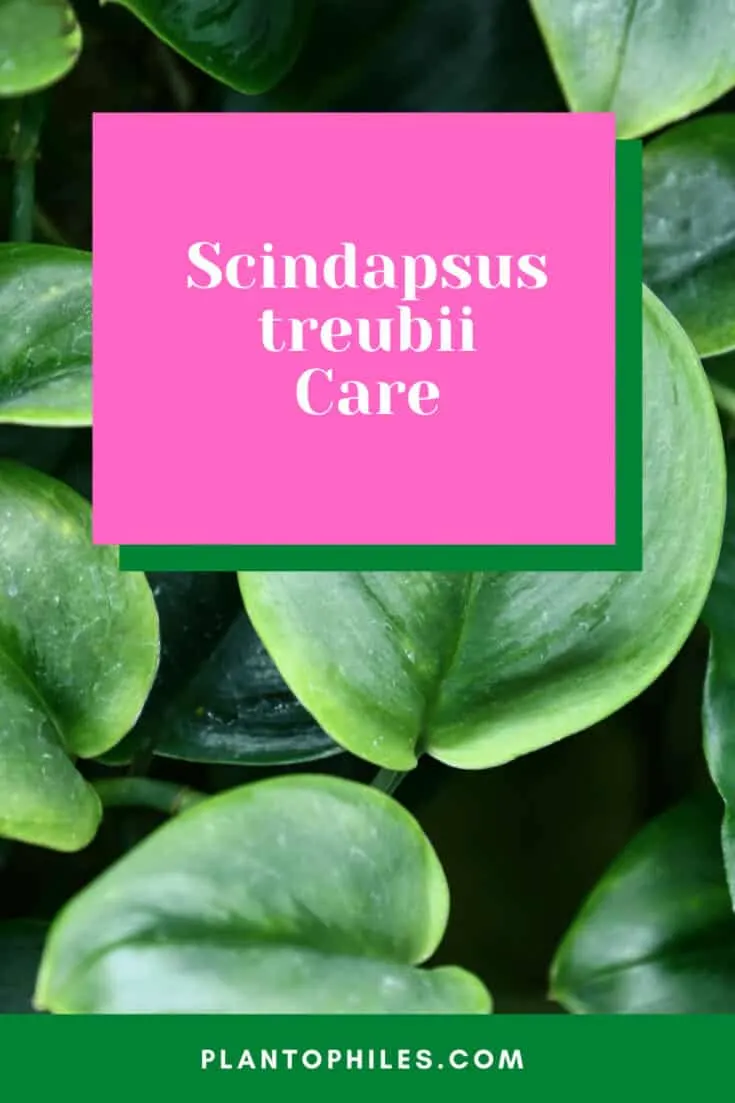If you already have a big collection of plants and want to graduate to ”rare plant collector” status, you might’ve looked into getting a Scindapsus treubii.
Scindapsus treubii fit into the aroid category much like Philodendrons and Syngoniums, and luckily for you even though they are rare they’re easy to care for and a hardy plant that doesn’t need much attention to thrive.
It charms with its dense, thick, and sturdy leaves that are silvery-green in color (or black if you go for a dark form Scindapsus treubii).
It is native to Asia where it trails along the ground until it finds a tree to climb up on, then it reaches its full growth potential and the leaves become longer, thinner, and darker.
It does flower in nature sometimes but very rarely does so in cultivation.
Since it is a rare plant it cannot be readily found in most nurseries and garden centers and you will have to look for it a little harder.
A good place to start is Facebook houseplant-related groups and online dealers of rare plants.
It will cost you more than a regular houseplant but shouldn’t break the bank because it is not that popular yet.
That being said, it is understandable you want to do everything you can to keep it alive and thriving.
Below you will find all of my best tips and tricks to nurture a Scindapsus treubii.
Scindapsus treubii Care
To care for Scindapsus treubi provide a well-draining potting mix using perlite and bright indirect light. Water when the top 2” of soil are dried out completely and provide temperatures between 65-75˚F (18-24˚C) and a humidity >50%. Use a nitrogen-rich fertilizer such as NPK 20-10-10 bi-weekly during the growing season.
Table of Contents
Scindapsus treubii Care Guide
Soil
Scindapsus treubii are not picky with soil, a regular houseplant mix can be used but if you want to nitpick you can add some perlite to the soil for aeration.
A fast-draining mix is always the best option to avoid waterlogging and root rot.
If you do mix your own soil you can mix one part soil one part orchid bark and one part perlite.
These plants are also growing well in peat moss, as they are often growing in peat swamp forests according to a published article by Wong Sin Yeng on Researchgate.
Light
Scindapsus treubii likes bright indirect light which makes it a perfect candidate for an east-facing window or further away from a south-facing window.
They will tolerate small periods of direct light but will start to grow very slowly and fade in color if placed in a dark place.
I have mine in my bathroom that is high in humidity and relatively low in light so it has been a slow grower, but I like it that way.
The less I have to do the better, and if I can postpone a repotting or two that is a plus in my book.
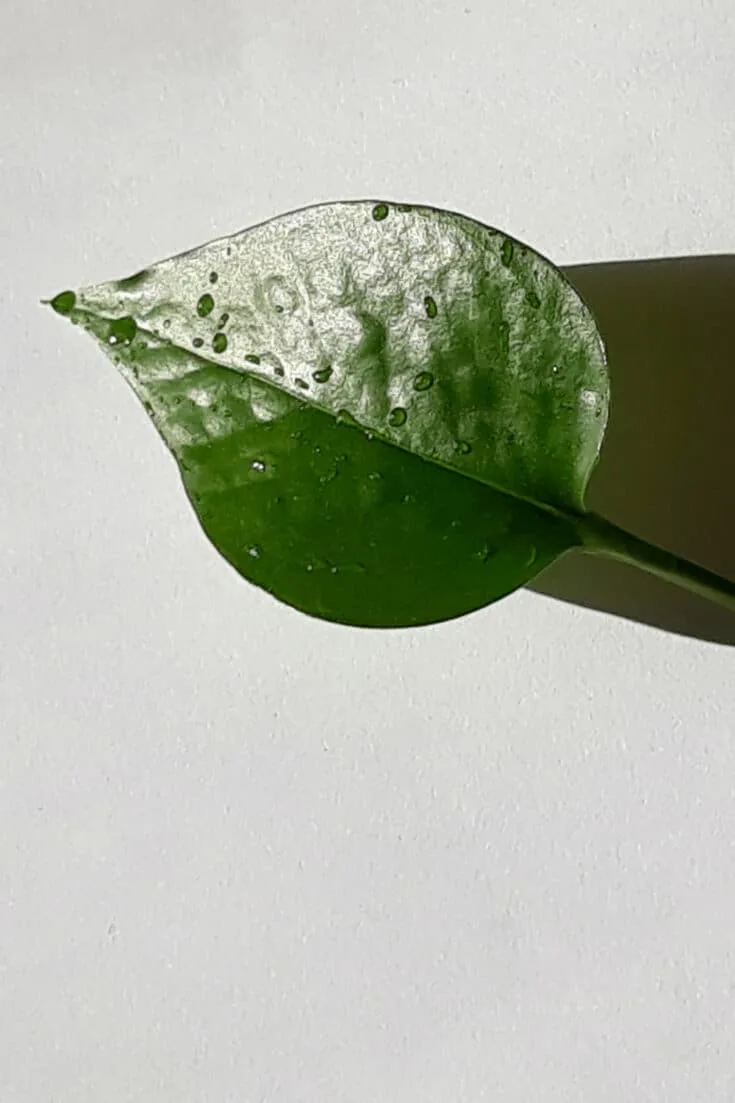
Scindapsus treubii prefers bright indirect light
Watering
You should allow your Scindapsus treubii’s soil to dry out completely before watering.
Much like a succulent it doesn’t need to be drenched all the time and won’t mind a bit of neglect watering-wise.
When it does get thirsty though it will show you so with its leaves curling.
The leaves will go back to their vibrant self once they are saturated with water.
I wouldn’t always wait for this sign though, this already means your plant is stressed and should’ve been watered earlier.
Just keep an eye on it while you are still getting to know each other.
Since it is a tropical plant it will do best when watered with distilled or aquarium water.
Tap water is too hard and might cause mineral deposits on your leaves.
Always adapt your watering schedule to the amount of light your plant gets.
What I mean by that is if you have your Scindapsus treubii next to a south-facing window, it will probably need to be watered more often than the same plant sitting in a north-east facing window.
The same goes for temperature as water evaporates quicker when it’s hot and you will notice the soil drying out sooner.
Temperature
The best temperature range for Scindapsis treubii is between 65-75˚F (18-24˚C).
An interesting feature of Scindapsis treubii is that it can tolerate colder temperatures quite well. Moderate climate people rejoice!
It will do well next to a window even during the winter, but don’t let it be exposed to temperatures below zero as you could experience frost damage.
It will thrive in a warmer environment as well but don’t overbake them either, they like their shade and can wilt if they get too hot.
All in all, they will do well in a wide band of temperatures, but don’t take my word for it and observe how the plant feels and looks wherever you placed it.
Humidity
Scindapsus treubii appreciates a higher humidity of >50%.
As I said before it’s a hardy plant and around 50% humidity will be more than enough.
Keep the humidity for these plants above 60% for the best possible car.
Mist it every now and then, also with distilled or aquarium water to avoid mineral deposits on leaves.
As long as there are no crispy edges or yellowing, your plant is happy as it is.
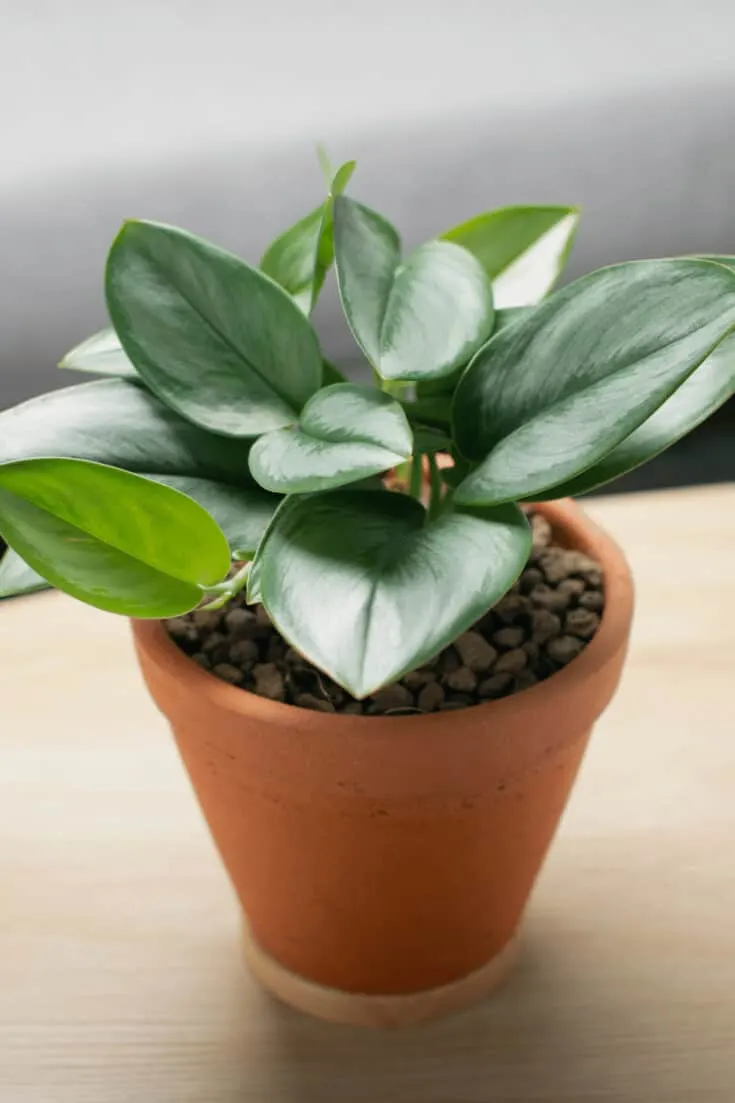
Fertilizer
Fertilize your Scindapsus treubii biweekly during spring and summer, as that is the time when it will be putting out ample new growth.
You can use a 20 10 10 ratio synthetic fertilizer richer in nitrogen diluted to half.
I personally like to fertilize all my plants with organic fertilizer to avoid any salt buildup or root burning.
Something like vermiculite or fish emulsion will be perfect, but you would be surprised how smelly fish emulsion is and might want to go for vermiculite over that.
Propagation
Scindapsus treubii are best propagated by stem cuttings around the beginning of the growing season in spring.
This is because roots that develop in water have a very hard time getting used to the soil. You can expect your cuttings to root in about 4 to 6 weeks. I’ve outlined the process of propagating your Scindapsus in nine easy steps below.
1. Take a look at your plant and choose one or a couple of branches that you could afford to shorten.
2. Cut away the tip of the branch making sure you cut below at least one node and remove the bottom leaves. Leave at least one leaf for the cutting to grow successfully
3. Choose a small pot, 3 inches is enough, and fill it with a mixture of peat moss and the soil mix mentioned in the soil section above. I recommend watering the soil before you put your cutting in.
4. Put the cutting into the pot carefully and check the node is covered with soil.
5. Moisten the top of the soil again and enclose the pot with the plant in a plastic bag to preserve humidity
6. Place in a bright and warm area of your home and forget about it for a while.
7. After a week or maybe two you can check if the cutting has set root. You do this by pulling on the stem ever so gently and see if it feels secure. If it has not have patience and leave it be, keep the moisture and warmth up and check again in a week.
8. When you are sure the cutting has rooted fairly well you can remove the plastic bag and start watering your new plants moderately (you can let the top of the soil dry but try and keep the rest of it evenly moist)
9. After 3 to 4 months, your Scindapsus treubii are ready to be potted in their first permanent pot home.
I like to plant them in bunches of 3 to 4 plants which results in a bushy, dense, and voluminous-looking plant. This is when I already add a smaller moss stick, so it can start climbing right away.
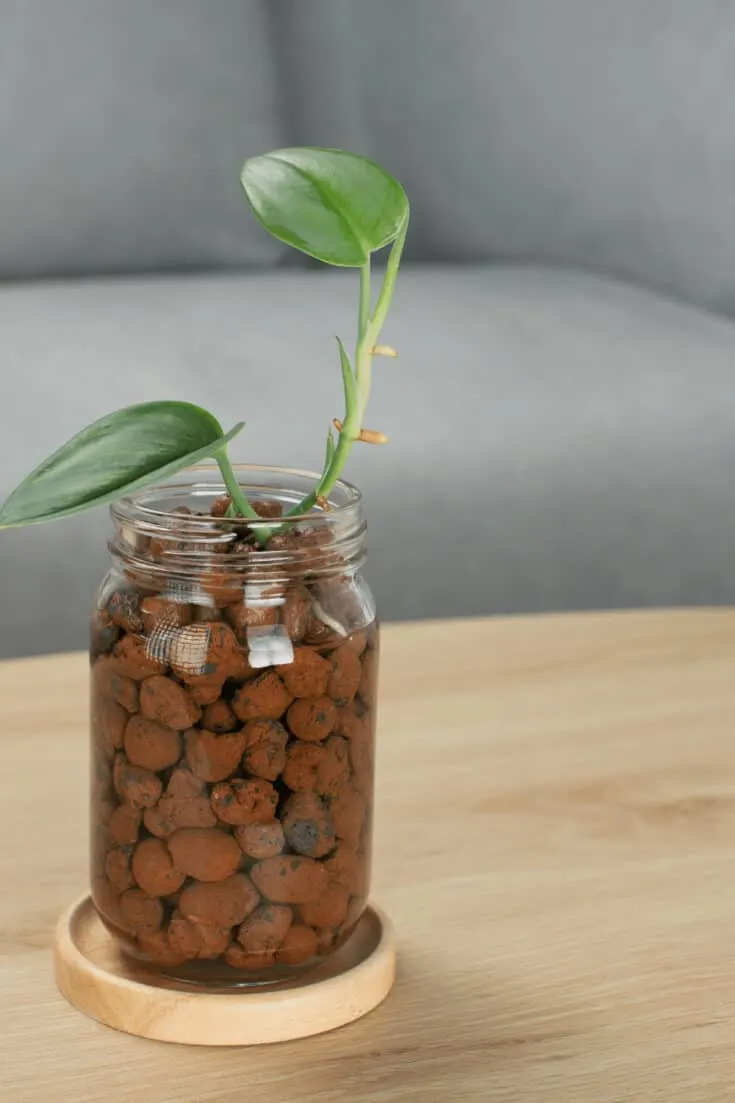
Scindapsus treubii can be propagated using stem cuttings
Growth
Scindapsus treubii will do best when staked.
I do not recommend treating it as a hanging plant.
This is almost a prerequisite as if you do not offer your Scindapsus anything to climb on its leaves will become smaller and revert back to their juvenile phase.
When you do stake it, make sure all the new growth has more space to stick onto and you will get gorgeous full-size leaves.
You should use a moss stick to stake your Scindapsus treubii to give it the possibility to develop aerial roots and stick to the stake.
A trellis will not do a good job, you should provide some organic material for the aerial roots to grow into.
Don’t forget to upgrade its moss stick once it reaches the top, or prune it back, so you can avoid it growing small, unattractive leaves.
Some people say they are slow growers, but I generally disagree.
If your Scindapsus treubii seems like it’s stagnating, even during the growing season, it might be lacking light or have poor soil quality.
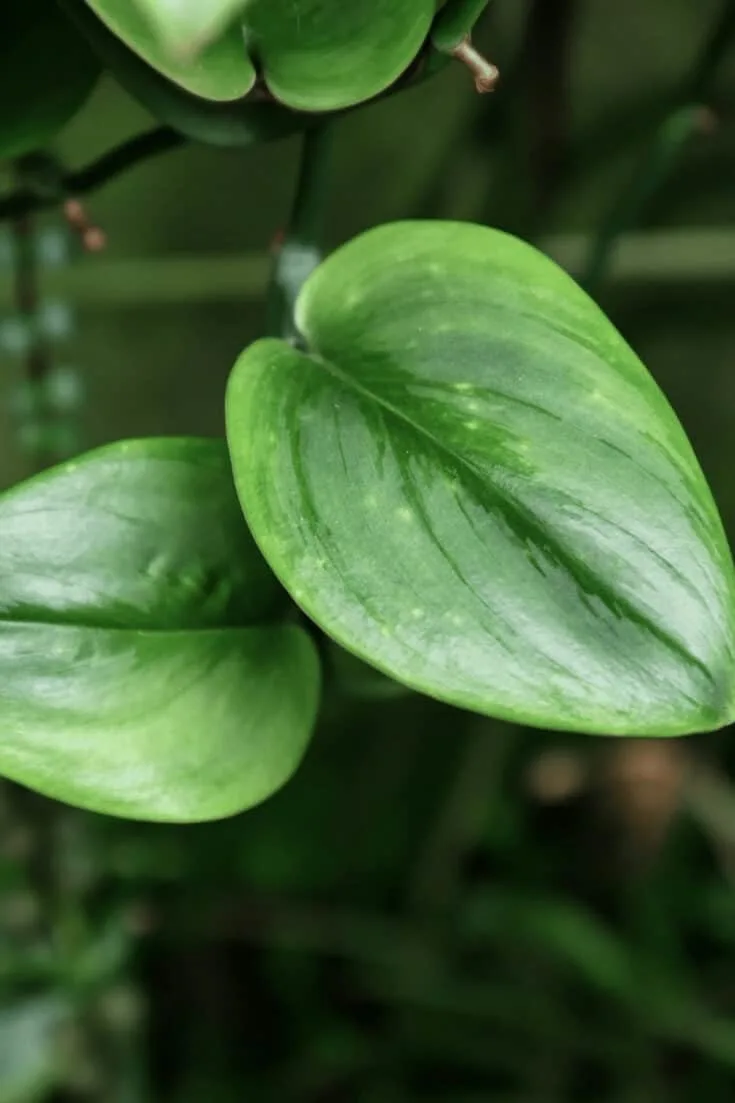
Let your Scindapsus treubii trail on a moss pole
Potting
For my Scindapsis treubii and all other trailing aroids, I always go for a high-quality terracotta pot with big enough drainage holes.
Clay attracts moisture and will be a great way to ensure your plant is not overwatered and will keep the moisture in the soil even.
You could also go for a regular plastic pot, but in this case, I would make an extra effort to make sure the soil is well-draining and that the water can run through the drainage holes quickly.
They like to be packed tightly so you don’t need to rush with repotting.
Please don’t make the same mistake I made and do not plant any plants in pots that do not have drainage holes! I can almost guarantee you will get root rot.
If you find a beautiful pot without drainage holes, plant your Scindapsus treubii in a nursery pot and put that into the decorative pot after.
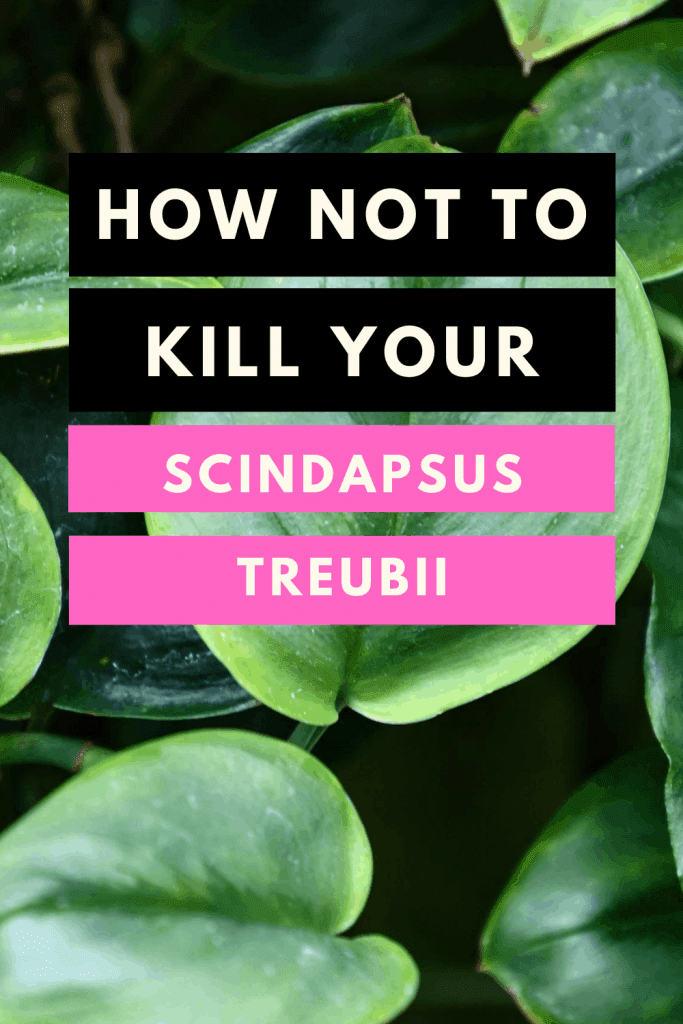
Scindapsus treubii care
Common Problems with Scindapsus treubii
I have never experienced any pests on my Scindapsus treubii. I mean it when I say they are hardy and pest resistant and will not give you any trouble.
I have also never seen any trace of mold, fungi, or other diseases. They seem to be immune to any and all outside threats.
As long as you are not overwatering, leaving it in the sun or cold all day, or keeping it in a very drafty area this plant will be just fine.
Scindapsus treubii is beginner and dummy-proof and I wish it was more widely available as it would be a perfect first plant for anyone looking to dip their toes into the houseplant world.
Since you will probably be ordering this plant from an online seller I do want to touch upon transportation stress.
How to deal with transportations stress
It is usually best to avoid ordering plants online during very hot or very cold weather.
Most sellers try and pack the plant in a way where it won’t be experiencing huge fluctuations of temperature by stuffing the box with paper or plastic air pillows but this is no guarantee as your Scindapsus treubii might be traveling for quite a while in various conditions.
Once you get your Scindapsus treubii unpack it immediately.
It might be looking a little bit sad since it was used to ample sunlight and air circulation. It will take some time for your plant to perk up.
Remove any dry or heavily damaged leaves and inspect them. These might give you an idea of what the next best steps are.
If the soil is damp and the leaves have black spots or yellowing, it might have developed a mold issue since these pop out when plants that were kept in a humid environment get suddenly placed in the dark.
Mold likes damp and dark environments so if you are suspecting this might be an issue I would not water but shower the top of the plant thoroughly and treat it with neem oil.
Leave it in a place with indirect light and good air circulation but no drafts.
If the soil is dry give it a good watering and consider a humidity dome.
A humidity dome is just a fancy word for a plastic bag you would put over your plant to increase humidity and ease its transition into new conditions.
Do not repot your Scindapsus treubii right away, let the plant settle first and you can consider a new pot in about a month’s time or when you see it’s doing well.
Do not fertilize right away either, let it adjust for a couple of weeks.
And finally, do not worry if it drops some leaves or gets some yellowing in the first month or two if you are following the instructions above it’s a completely normal process while it’s adjusting.
If you are looking for a rare plant to adorn your home that everyone will be impressed by but needs little to no maintenance, the Scindapsus treubii is perfect for you.
It is relatively easy to propagate, doesn’t need any special soil, doesn’t need a lot of humidity and they will do well in a wide band of temperatures and light.
Put it in a terracotta pot with a moss stick to climb up on and it will thrive.
Frequently Asked Questions About Scindapsus treubii
What is Scindapsus treubii nearly black?
Scindapsus treubii nearly black is a variant of Scindapsus treubii that is very dark. It is very close to being completely black.
Where can I buy a Scindapsus treubii?
Facebook, as well as Instagram and Ebay, are good places to buy a Scindapsus treubii. You can also check specialised online plant shops. Your regular plant nursery will most likely not carry this plant.
Conclusion
Scindapsus treubii is the right plant for the avid aroid collector that wants to have a unique plant in his collections that is turning heads.
Whenever there is a rare plant that is not difficult to care for you should get excited.
There is nothing worse than finally being able to acquire a highly sought-after plant just to kill it.
Been there done that!
If you could spare a second we would appreciate it if you would follow us on Facebook and/or Pinterest. Thank you for your support!


